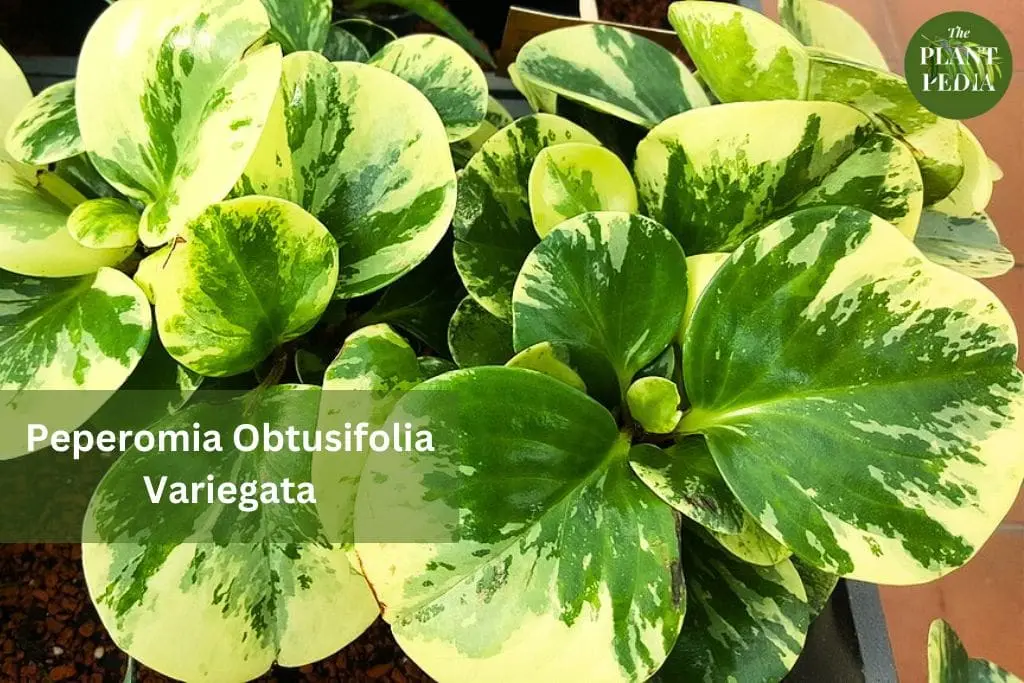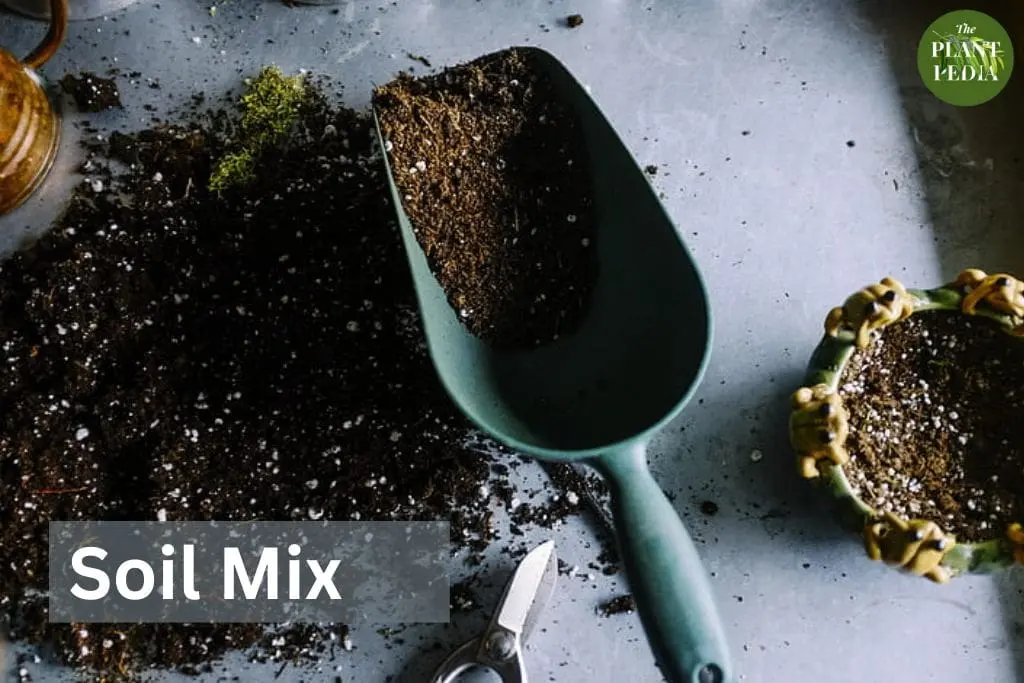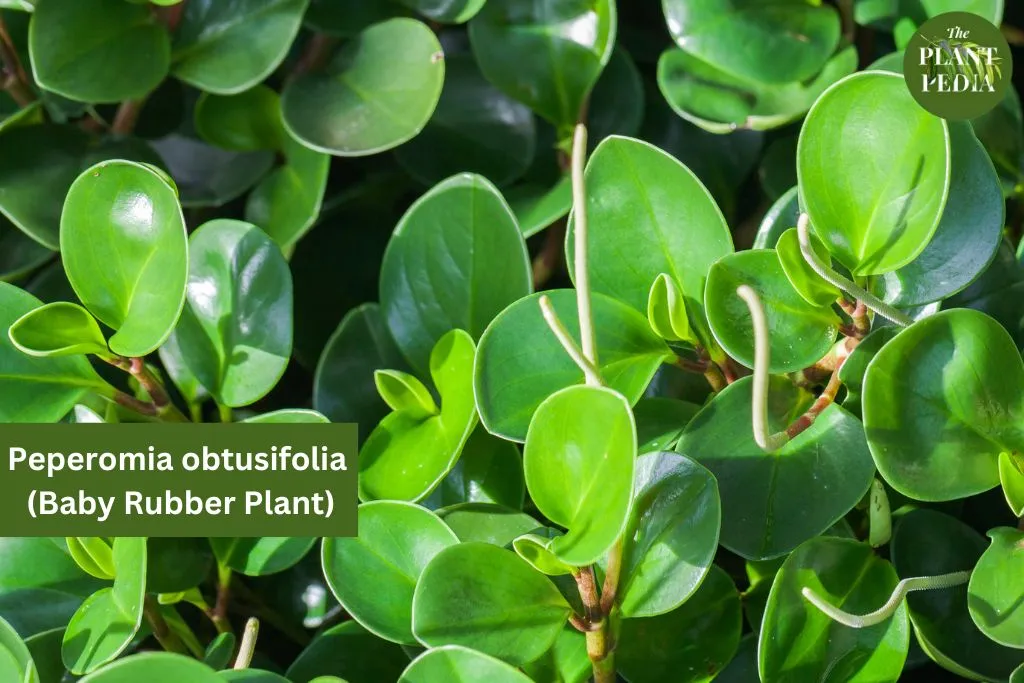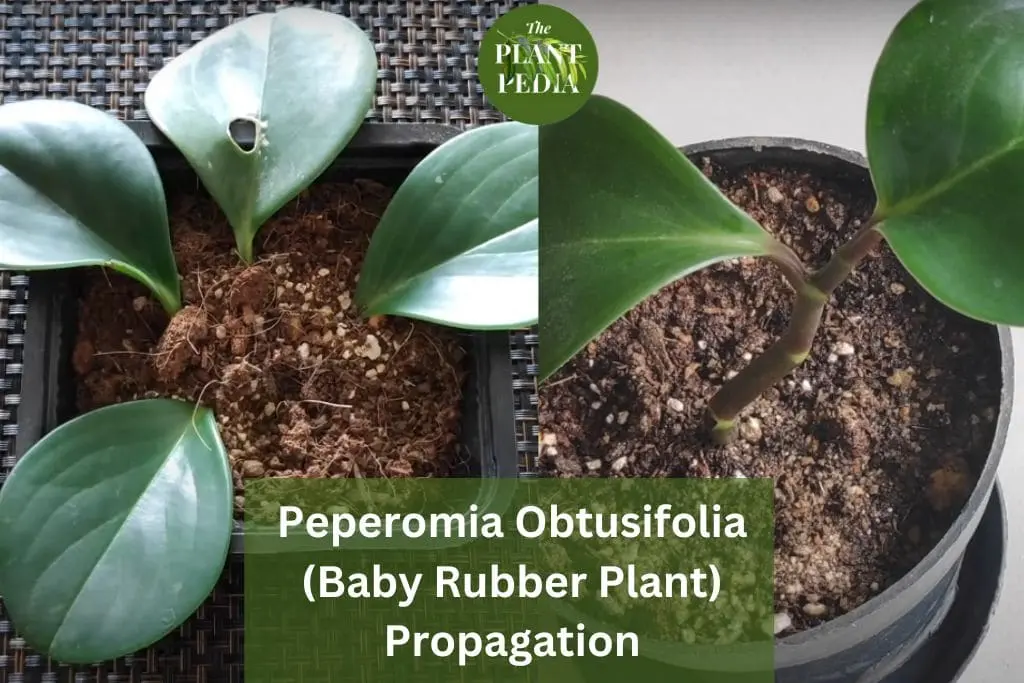Peperomia obtusifolia, commonly known as the baby rubber plant, is a beloved houseplant adored for its glossy, dark green leaves and easy-going nature.
As a popular choice among indoor plant enthusiasts, caring for your Peperomia obtusifolia begins with selecting the right soil.
In this comprehensive guide, we will explore the significance of choosing the optimal soil mix, delve into the ingredients that make up an ideal soil composition, discuss the process of repotting, watering techniques, and overall care tips to ensure your Peperomia obtusifolia thrives in its indoor habitat.
The Importance of Choosing the Right Soil
Selecting the appropriate soil for your Peperomia obtusifolia isn’t just a matter of convenience – it’s a fundamental aspect that sets the stage for the plant’s overall health and longevity.
A well-considered soil mix can make a significant difference in how your baby rubber plant thrives within its indoor environment.
The right soil composition goes beyond being a mere substrate to hold the plant; it directly impacts factors such as water retention, drainage, aeration, and nutrient availability.
By understanding the role of soil in the context of your Peperomia obtusifolia’s growth, you can ensure that your efforts in caring for this beloved houseplant yield the best possible results.

Read: Peperomia Obtusifolia Variegata: Everything About This Beauty.
Components of a Perfect Peperomia Obtusifolia Soil Mix
Crafting the perfect soil mix for your Peperomia obtusifolia involves more than just combining a few ingredients; it’s a thoughtful blend that caters to the unique needs of this charming houseplant.
Each component plays a crucial role in creating a balanced, well-draining, and nutrient-rich growing medium that encourages robust growth and lush foliage.
Peat Moss:
Peat moss, often referred to as “nature’s sponge,” is a lightweight and fibrous material derived from decomposed sphagnum moss.
It’s prized for its exceptional moisture-retaining properties, which prevent the soil from drying out too quickly.
In addition to its ability to hold water, peat moss contributes to the soil’s texture, enhancing its structure and making it conducive to root growth.
Perlite:
Perlite, a volcanic glass that expands when heated, is a mainstay in well-draining soil mixes. Its lightweight and porous nature ensure that water doesn’t pool around the roots, reducing the risk of overwatering and root rot.
Furthermore, perlite’s aeration-promoting qualities facilitate oxygen exchange within the soil, keeping the root zone healthy and thriving.
Coco Coir:
Coco coir, an eco-friendly option derived from coconut husks, has gained popularity as an alternative to traditional peat moss.
It boasts excellent water retention while simultaneously promoting drainage, striking a harmonious balance that prevents waterlogging.
Additionally, coco coir’s sustainable sourcing aligns with environmentally conscious gardening practices.
Pumice:
Pumice, a lightweight volcanic rock, is an unsung hero in the world of soil mixes. Its porous structure ensures that excess water swiftly exits the soil, reducing the risk of root rot.
Furthermore, pumice’s presence prevents soil compaction, enabling roots to navigate through the medium with ease.
This essential aeration component is especially beneficial for Peperomia obtusifolia’s root health.
Shredded Bark:
Shredded bark is a dynamic addition to the soil mix, contributing to improved drainage, aeration, and overall soil structure.
As the bark breaks down over time, it introduces organic matter into the mix, enhancing nutrient availability for your Peperomia obtusifolia.
Its presence prevents soil compaction, facilitating root growth and promoting a healthier root environment.
Compost:
Compost, often referred to as “black gold,” is a treasure trove of nutrients that enriches the soil and promotes plant growth.
Its addition to the Peperomia soil mix introduces valuable organic matter, enhancing the overall quality of the medium.
The nutrients released by compost feed the plant over time, ensuring a steady supply of essential elements for optimal growth.

Creating the Soil Mix
Crafting a soil mix tailored to the needs of your Peperomia obtusifolia is a rewarding endeavor that directly contributes to the plant’s well-being and long-term success.
The process involves more than just combining ingredients – it’s about understanding the roles each component plays and achieving the perfect balance to provide your baby rubber plant with an optimal growing medium.
Balancing Act: Factors to Consider
When creating the perfect soil mix for your Peperomia obtusifolia, it’s important to strike a balance between water retention and drainage, aeration and root health, and nutrient availability.
Each component contributes to these factors, ensuring that your plant receives the right amount of moisture, oxygen, and nutrients.
Customizing Your Mix: Proportions Matter
Begin by gathering the components you’ve chosen – peat moss, perlite, coco coir, pumice, shredded bark, and compost.
To create a well-rounded blend, use equal parts of each ingredient. This balanced ratio ensures that your Peperomia obtusifolia benefits from the combined attributes of these components.
Step-by-Step Guide to Creating the Mix
- Preparation: Before you start mixing, ensure that your chosen ingredients are clean and free from debris. This will help prevent any potential contamination and create a consistent blend.
- Equal Parts: Measure out equal parts of peat moss, perlite, coco coir, pumice, shredded bark, and compost. You can use a measuring cup, container, or any other consistent method to ensure accurate proportions.
- Mixing: Combine the measured ingredients in a large container or mixing bowl. Use your hands or a trowel to blend the components thoroughly. The goal is to achieve a uniform mixture that incorporates all the ingredients evenly.
- Testing and Adjusting: Once your soil mix is prepared, perform a quick test to assess its properties. Squeeze a handful of the mix – it should hold together without being overly compacted. When you release your grip, it should break apart easily. If the mix feels too dense, consider adding more perlite or pumice to improve aeration.
Benefits of a Custom Mix
Creating a custom soil mix for your Peperomia obtusifolia isn’t just a gardening indulgence – it’s a strategic decision that brings a host of benefits to your plant’s health, growth, and overall well-being.
While store-bought mixes serve a purpose, a personalized blend tailored to your plant’s specific needs offers advantages that can’t be ignored.
Let’s explore the numerous benefits that come with using a custom soil mix for your beloved baby rubber plant.
1. Tailored to Plant Needs:
A custom soil mix allows you to fine-tune the components to match the exact requirements of your Peperomia obtusifolia.
You have control over factors such as moisture retention, aeration, and nutrient availability, ensuring that your plant thrives in an environment that closely mimics its natural habitat.
2. Improved Drainage:
Many store-bought mixes lack proper drainage, which can lead to overwatering and root rot.
With a custom mix, you can include components like perlite, pumice, and shredded bark to ensure that excess water drains efficiently, preventing waterlogged conditions that could harm your plant’s roots.
3. Enhanced Aeration:
Proper aeration is essential for root health and oxygen exchange within the soil.
Custom mixes incorporating perlite, pumice, and other airy components create an environment where roots can breathe freely and absorb oxygen efficiently, supporting overall growth.
4. Prevents Soil Compaction:
Soil compaction can hinder root growth and reduce water infiltration.
By incorporating materials like pumice and shredded bark into your custom mix, you create a well-structured medium that resists compaction, allowing roots to expand and explore without restriction.
5. Nutrient-Rich Blend:
The addition of compost to your custom mix infuses the soil with organic matter and nutrients, providing a steady supply of essential elements that promote healthy growth.
This natural fertilizer gradually releases nutrients, ensuring that your Peperomia obtusifolia is nourished over an extended period.
6. Reduced Risk of Disease:
Using a custom mix can help prevent issues like root rot and fungal diseases.
The enhanced drainage, aeration, and balanced moisture levels in your custom blend create an inhospitable environment for pathogens, reducing the risk of diseases that can compromise your plant’s health.
7. Long-Term Sustainability:
A well-structured custom mix maintains its integrity over time, offering consistent benefits to your plant as it grows.
This long-term sustainability means less frequent repotting and reduced stress on the plant, allowing it to focus on thriving and producing lush foliage.
8. Cultivating Expertise:
Creating a custom soil mix gives you the opportunity to delve into the science of plant care.
As you learn about the properties of different components and how they interact, you cultivate a deeper understanding of your Peperomia obtusifolia’s needs, making you a more knowledgeable and skilled gardener.
9. Personal Gardening Journey:
Designing a custom mix is a creative endeavor that adds a personal touch to your gardening journey.
It empowers you to actively participate in your plant’s well-being, nurturing a stronger connection between you and your Peperomia obtusifolia.
10. Holistic Plant Health:
The combined benefits of improved drainage, aeration, nutrient availability, and disease prevention contribute to the overall health and vitality of your Peperomia obtusifolia.
A custom soil mix is a foundational step toward creating an environment where your plant can thrive and flourish.
Incorporating a custom soil mix into your Peperomia obtusifolia care routine isn’t just about soil – it’s about fostering an environment where your plant can reach its full potential.
By recognizing and capitalizing on the benefits of a personalized blend, you’re investing in the long-term health and beauty of your beloved baby rubber plant.
Repotting Your Peperomia Obtusifolia
As your Peperomia obtusifolia grows and flourishes, its root system will inevitably outgrow its current container.
Repotting is a crucial aspect of plant care, providing your baby rubber plant with the space it needs to continue thriving.
Proper repotting techniques, accompanied by the custom soil mix you’ve prepared, will ensure your plant’s health, vitality, and aesthetic appeal.
Signs It’s Time to Repot
Recognizing when it’s time to repot your Peperomia obtusifolia is essential. Look out for these signs:
- Roots Emerging from the Drainage Holes: If you notice roots growing out of the drainage holes or circling around the root ball, it’s a clear indicator that your plant is ready for a larger container.
- Stunted Growth: If your plant’s growth has slowed down, it might have exhausted the nutrients and space available in its current pot.
- Watering Frequency: If you find yourself watering more frequently than usual because the soil dries out quickly, your plant may be root-bound and in need of repotting.
Read: Peperomia Obtusifolia Yellow Leaves: Causes, Solutions & All Info.
Choosing the Right Pot
When selecting a new pot for your Peperomia obtusifolia, choose one that is only slightly larger than its current container.
A pot that’s too large can lead to overwatering and root rot. Ensure that the new pot has drainage holes to prevent water from accumulating around the roots.
Repotting Process
- Preparation: Water your Peperomia obtusifolia a day or two before repotting. This helps the plant recover from the stress of transplanting.
- Gently Remove the Plant: Carefully remove the plant from its current pot. You can gently tap the sides of the pot or use a trowel to loosen the soil and root ball.
- Inspect and Prune Roots: Examine the roots for any signs of damage, disease, or rot. Trim away any unhealthy or excessively long roots using clean, sharp scissors or pruning shears.
- Add Fresh Soil: Place a layer of your custom soil mix at the bottom of the new pot. Position the Peperomia obtusifolia in the center, ensuring it sits at the same depth it was in its previous pot.
- Fill the Pot: Fill the pot around the plant with your custom soil mix. Gently press the soil down to eliminate air pockets while being careful not to compact it excessively.
- Watering: After repotting, give your plant a thorough watering to settle the soil around the roots. Water until you see water escaping through the drainage holes.
Post-Repotting Care
- Light and Location: Place your recently repotted Peperomia obtusifolia in bright, indirect light. Avoid direct sunlight, as the plant may be more sensitive immediately after repotting.
- Watering: Allow the top inch of the soil to dry out before watering your plant. Be cautious not to overwater during the post-repotting period.
- Limit Fertilization: Avoid fertilizing your plant for a few weeks after repotting to minimize stress on its roots.
Watering Techniques
Understanding the appropriate watering regimen is crucial for your plant’s well-being. Water your Peperomia obtusifolia when the top inch of soil feels dry to the touch.
Avoid overwatering, as this can suffocate the roots and lead to root rot. Similarly, underwatering can cause stress and result in leaf drop.

General Care Tips for a Thriving Peperomia Obtusifolia
- Lighting: Place your Peperomia obtusifolia in bright, indirect light. Avoid direct sunlight, as it can scorch the leaves.
- Fertilization: Feed your plant every few months with a balanced, diluted fertilizer during the growing season (spring and summer). Avoid over-fertilization, as it can damage the plant.
- Humidity: Mist your plant regularly or place a tray of water nearby to maintain a moderate level of humidity, mimicking its native tropical environment.
- Pruning: Prune leggy or damaged growth to promote a bushier appearance and encourage new growth.
- Pest Management: Keep an eye out for common pests like spider mites and mealybugs. Regularly inspect your plant and treat any infestations promptly.
- Temperature: Maintain temperatures between 65°F to 80°F (18°C to 27°C) for optimal growth. Avoid cold drafts and sudden temperature fluctuations.
Common Problems and Solutions
- Leaf Drop: Adjust your watering frequency and light exposure to prevent overwatering and inadequate light, both of which can lead to leaf drop.
- Brown Spots on Leaves: Investigate the cause, whether it’s overwatering, underwatering, pests, or diseases, and address the issue accordingly.
- Root Rot: If root rot is detected, repot the plant in fresh soil, trim away affected roots, and adjust your watering routine to prevent future occurrences.
Related FAQs:
What’s the best soil mix for Peperomia obtusifolia?
The best soil mix for Peperomia obtusifolia is a well-draining blend that combines components like peat moss, perlite, coco coir, pumice, shredded bark, and compost in equal parts.
This mix provides proper moisture retention, drainage, aeration, and nutrient availability for the plant’s optimal growth.
Can I use regular potting soil for my Peperomia obtusifolia?
Regular potting soil may not provide the ideal drainage and aeration that Peperomia obtusifolia requires. It’s recommended to create a custom soil mix or use a succulent and cactus mix as an alternative.
These mixes mimic the plant’s natural habitat and cater to its specific needs.
How often should I repot my Peperomia obtusifolia?
Peperomia obtusifolia should be repotted every year or two, or when you notice its roots becoming root-bound or outgrowing the current container.
Repotting provides the plant with fresh soil and room to grow, promoting healthy root development.
Can I use a larger pot when repotting my Peperomia obtusifolia?
While repotting, it’s best to choose a pot that is only slightly larger than the current one. A significantly larger pot can lead to overwatering and hinder the plant’s growth.
Choose a pot that accommodates the root ball comfortably while allowing room for growth.
How do I prevent overwatering my Peperomia obtusifolia?
Overwatering can be detrimental to Peperomia obtusifolia. To prevent overwatering, ensure the pot has drainage holes, use a well-draining soil mix, and water the plant only when the top inch of the soil is dry.
Monitoring the soil’s moisture level and adjusting your watering frequency accordingly is key.
Can I use a self-watering pot for my Peperomia obtusifolia?
While self-watering pots can be convenient, they may not be suitable for Peperomia obtusifolia, which prefers to dry out slightly between waterings.
The constant moisture in self-watering pots could lead to root rot. Stick to pots with drainage holes and a well-draining soil mix.
Should I fertilize my Peperomia obtusifolia’s soil?
Yes, fertilizing your Peperomia obtusifolia’s soil is beneficial. Use a balanced, diluted fertilizer during the growing season (spring and summer) every few months.
However, avoid over-fertilizing, as this can damage the plant. Always follow the recommended dosage on the fertilizer label.
Can I reuse the soil from my Peperomia obtusifolia’s old pot when repotting?
It’s generally best to use fresh soil when repotting your Peperomia obtusifolia. Over time, soil can become depleted of nutrients and compacted, which may hinder the plant’s growth.
Using fresh soil ensures that your plant has a nutrient-rich and well-draining medium to thrive in.
How do I know if my Peperomia obtusifolia’s soil mix is suitable?
A suitable soil mix for Peperomia obtusifolia should allow for proper drainage and aeration while retaining some moisture.
Test the soil mix’s texture by squeezing a handful – it should hold its shape without being overly compacted.
Additionally, monitor your plant’s growth, foliage health, and watering needs to gauge the effectiveness of the soil mix.
Can I propagate my Peperomia obtusifolia in the same soil mix?

Yes, you can propagate Peperomia obtusifolia in the same soil mix as the parent plant. The well-draining and nutrient-rich properties of the soil mix provide an excellent environment for propagating new plants.
Follow proper propagation techniques and ensure that the newly propagated plants have adequate moisture and light.
Conclusion
Cultivating a thriving Peperomia obtusifolia begins with the soil it calls home. By crafting the perfect soil mix, repotting judiciously, adhering to appropriate watering practices, and providing the right care, you can enjoy the beauty of this charming houseplant for years to come.
Remember that each plant is unique, so be attentive to its specific needs and adjustments.
With the knowledge and insights shared in this guide, you’re well-equipped to embark on a successful journey with your Peperomia obtusifolia.
